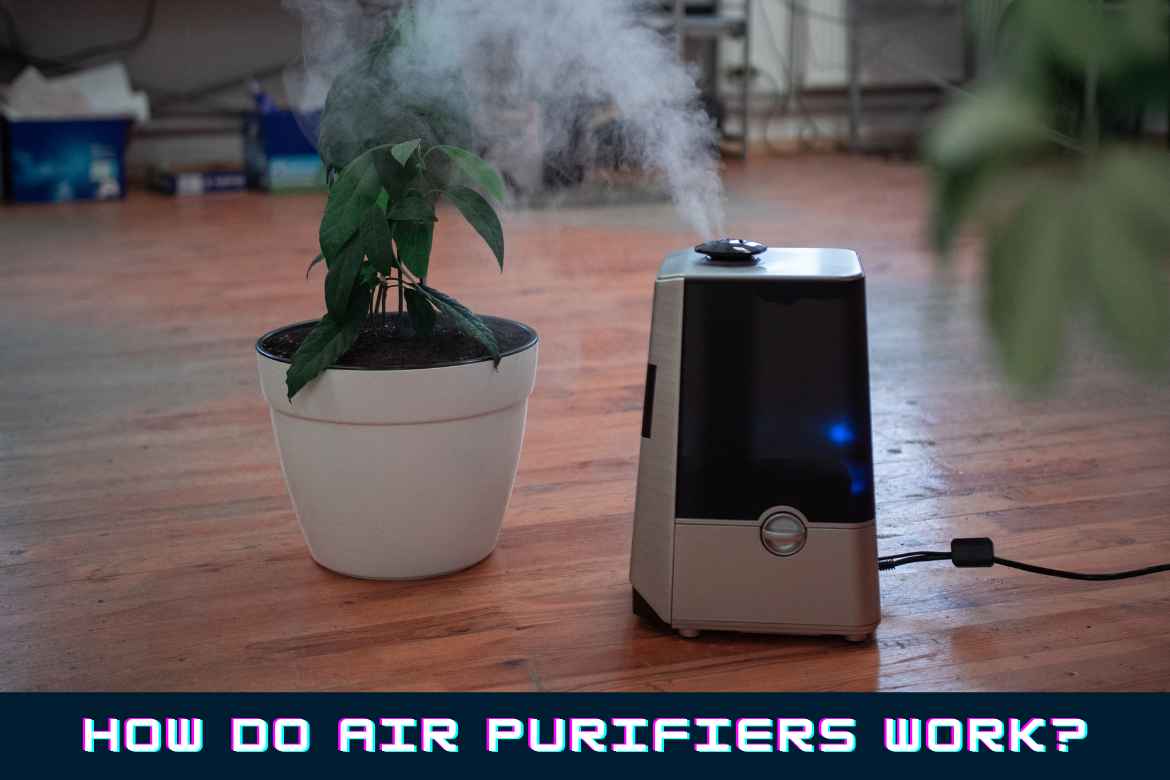Clean air is essential for our health, yet many of us overlook the importance of indoor air quality. We spend a large amount of time indoors, whether it’s at home, in the office, or in other enclosed spaces. But most of the time, we don’t even know how to use air purifier devices the correct way. Also, unfortunately, the air we breathe indoors can be laden with pollutants, allergens, and other harmful particles that can have adverse effects on our health.
This is why we should increase our knowledge about air purifiers and how they work. Air purifiers are ingenious devices designed to enhance the standard of indoor air by eliminating airborne pollutants and providing us with cleaner, fresher air to breathe. They have gained tremendous popularity in recent years as more people become aware of the impact of poor air quality on their health.
According to the Environmental Protection Agency (EPA), indoor air pollution can be up to five times worse than outdoor air pollution. This startling statistic highlights the urgent need to address the quality of the air we breathe in our homes and other enclosed spaces. Air purifiers play a vital role in mitigating this problem by effectively removing pollutants and improving the overall air quality.
In this article, we will delve into the fascinating world of air purifiers and explore how they work. We will uncover the basic principles behind air purification, the different types of air purifiers available, and the innovative technologies they employ. By understanding the mechanisms behind these devices, you will have the information necessary to make wise judgements when selecting the right air purifier for your specific needs.
Table of Contents
ToggleUnderstanding Air Pollution
- Particulate Matter: These are microscopic allergens, including pollen, dust, pet dander, spores from mould, and other airborne particles. They can trigger allergies and respiratory issues, particularly for individuals with asthma or sensitivities.
- Volatile Organic Compounds (VOCs): VOCs are emitted as gases from various household products and materials, including paints, solvents, cleaning agents, carpets, and furniture. Prolonged exposure to VOCs can lead to headaches, dizziness, eye irritation, and even long-term health effects.
- Formaldehyde: This is a specific type of VOC commonly found in building materials, insulation, and certain furniture. Formaldehyde exposure can cause respiratory irritation and allergic reactions, and it may have carcinogenic properties too.
Basic Principles of Air Purification
1. Filtration: The Core Mechanism of Air Purifiers
Types of Filters Used in Air Purifiers
A common question most people have is, “Do air purifiers work?”. Well, air purifiers employ various types of filters to effectively capture and remove airborne pollutants. Let’s try to understand through further information. The two most common types of filters used are:
- High-Efficiency Particulate Air (HEPA) Filters: HEPA filters are highly efficient in trapping tiny particles as small as 0.3 microns. They work by utilising a dense mat of fibres that create a maze-like structure. As air passes through the filter, particles get trapped within the fibres, effectively removing allergens, dust, pollen, pet dander, and other microscopic pollutants.
- Activated Carbon Filters: Activated carbon filters excel at absorbing and trapping gases, odours, and chemical pollutants. They contain a highly porous carbon material that acts as a sponge, attracting and adsorbing volatile organic compounds (VOCs), formaldehyde, smoke, and unpleasant smells.
How Filters Capture and Remove Airborne Particles
- Filters in air purifiers employ different mechanisms to capture and remove airborne particles. Why don’t we look at a few?
- Inertia: Large particles, such as dust and pet hair, have high inertia and cannot change direction easily. As air flows through the purifier, these particles collide with the fibres of the filter and get trapped.
Interception: Mid-sized particles follow the airflow but come close enough to the fibres for interception. They stick to the fibres as they pass through the filter. - Diffusion: The smallest particles, including ultrafine particles and microscopic allergens, undergo Brownian motion, causing them to collide with and get trapped by the fibres too.
2. Circulation: Moving Air Through the Purifier
Techniques Used to Ensure Effective Circulation
- Fans: Most air purifiers are equipped with fans to draw air into the unit and push it back out, creating a flow of air that passes through the filters as well. The fan helps circulate the purified air throughout the room, ensuring comprehensive coverage.
- Air Intake and Outflow Design: Purifiers are designed with strategically placed air intake and outflow vents to facilitate the movement of air. Intake vents capture air from the surrounding environment, while outflow vents release the purified air back into the room.
- Multiple Air Exchange Rates: Some air purifiers offer adjustable settings for air exchange rates. Higher exchange rates indicate faster airflow and more frequent purification cycles, resulting in improved circulation and faster pollutant removal.
- Placement and Room Size Considerations: Proper placement of the air purifier in the room is important for optimal circulation. Placing the purifier in a central location away from obstructions allows for better distribution of purified air. It’s also important to consider the purifier’s coverage area to ensure it matches the size of the room.
So, by understanding the core mechanisms of filtration and the importance of proper air circulation, we can appreciate how air purifiers effectively capture and remove airborne pollutants, ensuring cleaner and healthier indoor air.
Types of Air Purifiers and Their Principles
1. Working Principle of HEPA Filters
- Interception: As air passes through the dense fibres of the filter, larger particles are intercepted and captured. These particles are too large to navigate through the maze-like structure of the fibres.
- Impaction: Medium-sized particles that are not captured by interception follow the airflow but collide with the fibres due to their inertia. This process, known as impaction, causes the particles to adhere to the fibres.
- Diffusion: The smallest particles, including ultrafine particles, undergo random motion, known as Brownian motion. Due to their small size, they collide with gas molecules and eventually become trapped by the fibres through diffusion.
2. How Activated Carbon Filters Trap Odours and Chemical Pollutants
Activated carbon air purifiers use filters coated with activated carbon to remove odours, gases, and chemical pollutants from the air. Activated carbon has a highly porous structure as well. That provides a large surface area for adsorption.
When air passes through the filter, the activated carbon attracts and adsorbs VOCs, odours, and other gaseous pollutants. The pollutants become trapped within the carbon’s pores, effectively removing them from the air. Activated carbon filters work synergistically with other filtration methods to provide comprehensive air purification.
3. Ionic Air Purifiers and Their Ionisation Process
Ionic air purifiers, also known as ionisers, operate by emitting negatively or positively charged ions into the air. These ions attach themselves to airborne particles, causing them to become charged very quickly.
The charged particles then cluster together due to electrostatic forces, forming larger particles that are easier to capture by surfaces or other filtration mechanisms within the purifier. This process helps to remove particulate matter, such as dust, allergens, and some bacteria, from the air.
Additional Features and Technologies of Air Purifiers
1. UV-C Light Technology
How UV-C Light Kills Bacteria and Viruses
Integration of UV-C Technology in Air Purifiers
2. Air Quality Sensors and Smart Purifiers
Importance of Real-Time Air Quality Monitoring
Smart Features and Automation in Modern Air Purifiers
Modern air purifiers often come equipped with smart features and automation capabilities, which enhance convenience and efficiency. Some common smart features include:
- Auto Mode: Air purifiers with auto mode use the data from air quality sensors to adjust their operation automatically. When pollutant levels increase, the purifier intensifies its purification process, and when the air quality improves, it adjusts to a lower setting.
- Wi-Fi Connectivity: Air purifiers with Wi-Fi connectivity can be controlled remotely using smartphone apps. This speaks volumes about how far technology has gone regarding air purifiers too. This feature allows users to monitor and control the purifier from anywhere, even when they are not at home.
- Scheduled Operation: Smart purifiers can be programmed to operate at certain times of the day, which allows the air to be continuously purified without the need for nonstop manual adjustments all the time.
- Filter Replacement Notifications: Advanced air purifiers can track the usage of filters and send notifications when it is time for a replacement. This feature ensures the filters are changed at the appropriate intervals, maintaining the purifier’s efficiency.
These smart features and automation capabilities make air purifiers more user-friendly, efficient, and adaptable to individual needs, further improving indoor air quality and the overall user experience.
Incorporating UV-C light technology and air quality sensors with smart features, modern air purifiers go beyond basic filtration to provide enhanced sanitization, real-time monitoring, and convenient operation. These advancements contribute to a healthier living environment by targeting harmful microorganisms and facilitating efficient air purification.

